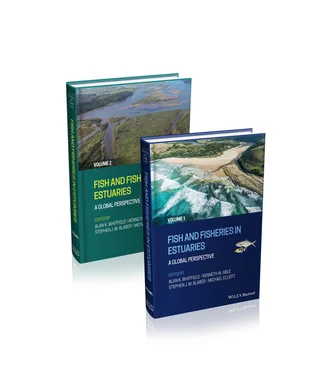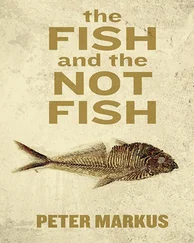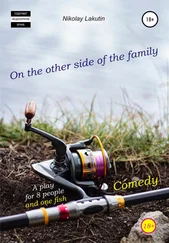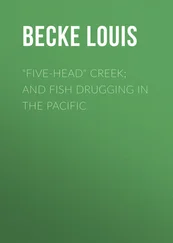
Figure 2.2 nMDS ordinations of the ichthyofauna of South African estuaries based on (a) presence/absence, (b) abundance and (c) biomass, and categorized by biogeographic province
(modified from Harrison & Whitfield 2006a).
The key taxa identified during the study by Harrison & Whitfield (2006a) may be divided into a number of groups ( Figure 2.3), based on their spatial occurrence and relationships with environmental variables. The first group (Group 1) comprises tropical species (e.g. leiognathid Leiognathus equula ) that are largely restricted to the warm, brackish, turbid waters of subtropical estuaries, with the distribution of these fishes strongly linked to water temperature. A second group (Group 2) also comprises tropical species (e.g. haemulid Pomadasys commersonnii ) but their distribution extends further south into warm‐temperate estuaries. Although the abundance of most species in this group was also positively correlated with water temperature, they are an important component of the fish community of both subtropical and warm‐temperate estuaries. The third group (Group 3) comprises ‘warm‐water’ endemic species (e.g. sparid Rhabdosargus holubi ) that are common in warm‐temperate and subtropical estuaries but are generally not a major component of the fish community of cool‐temperate or tropical estuaries. The fourth group (Group 4) comprises ‘cool‐water’ endemics (e.g. sparid Lithognathus lithognathus ) that occur in both warm‐ and cool‐temperate estuaries but are not common in subtropical systems. These species appear to prefer cooler waters and relatively high salinities. The fifth group (Group 5) comprises temperate species (e.g. carangid Lichia amia ) that occur in the eastern Atlantic region and extend around the South African coast into KwaZulu‐Natal, but do not constitute a major component of the ichthyofauna of subtropical estuaries. The last group (Group 6) comprises ‘widespread’ species (e.g. M. cephalus ) that occur in all estuaries throughout the region ( Figure 2.3).
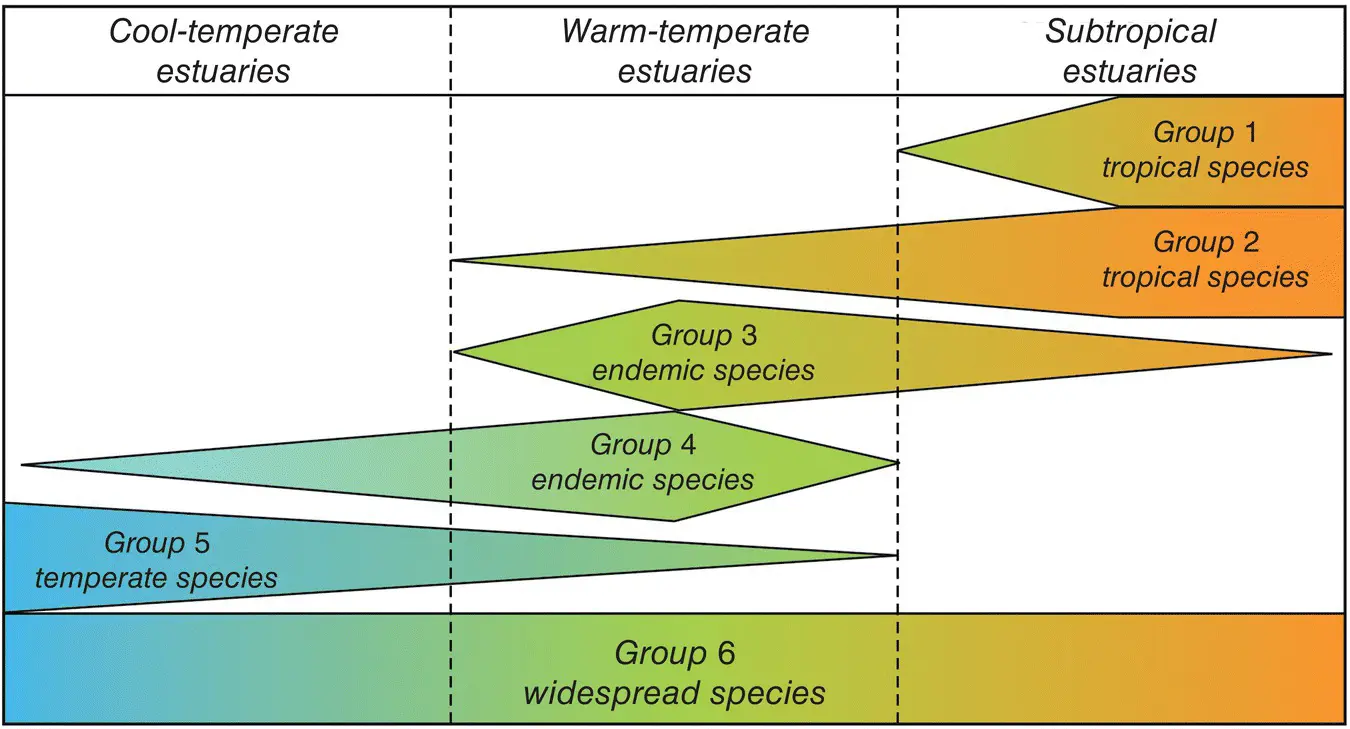
Figure 2.3 South African estuarine fish faunal groupings based on environmental preferences and the zoogeography of the region (after Harrison & Whitfield 2006a).
Several authors have described the biogeographic changes in estuarine ichthyofaunal associations in other parts of the world, but not in the same manner as the above analysis. For example, along the California coast of North America, fishes associated with bays and estuaries were distinctly different north and south of Point Conception, with this location more of a boundary for southern species than for northern ones (Horn & Allen 1978). Vieira & Musick (1993, 1994) established that the majority of the species in tropical and warm‐temperate estuaries of the western Atlantic were young‐of‐the‐year that were maintained by recruitment waves from the adjacent marine environment. Ayvazian et al. (1992) found, however, that in the temperate north‐eastern USA, there was a trend towards a decrease in estuary nursery use by marine species and an increase in diadromous and solely estuarine species with increasing latitude. Dame et al. (2000) described a similar pattern in estuaries of the South Atlantic coast of North America, where systems in temperate North Carolina, South Carolina and Georgia were dominated by estuarine spawning species, while fish assemblages in the more subtropical Florida estuaries contained a higher proportion of marine species.
In the north‐eastern USA, Roman et al. (2000) found that fishes with life history strategies classified as nursery, marine, diadromous or transient species represent a greater percentage of fishes using estuarine habitats in more southern latitudes, while resident fishes and seasonal residents dominate the fauna of estuaries in the northeast. Emmett et al. (2000) raise the important point that, unlike the situation on the east coast of the USA, where most fish species reside in estuaries during most of their life history, many North American west coast species (especially anadromous taxa) use estuaries only during a short period of their life cycle. However, these estuaries play an important role in the life histories of these species, e.g. salmonids. From studies in temperate New Zealand estuaries, McDowall (1985) suggested that, with increasing latitude, there was a change from species of marine origin to freshwater/diadromous taxa, and thus similar to the findings above for fishes in estuaries along the eastern North American coast.
The composition and diversity of estuarine fish assemblages in Europe are also often related to latitude and thus biogeographic zones. Records of fish species from European estuarine waters obtained from information published in Elliott & Hemingway (2002) included data of fish taxa reported in 23 European estuaries covering nine countries ( Figure 2.4). The presence/absence of each species from each estuary was used to generate a Bray‐Curtis resemblance matrix and subjected to non‐metric multidimensional scaling ( Figure 2.5). The results indicate that, based on their fish assemblages, the compositions of European estuaries are broadly arranged according to a latitudinal gradient, with those in systems below 45 °N situated towards the bottom half of the ordination and those at latitudes above 45 °N located in the top half of the ordination ( Figure 2.5a).

Figure 2.4 Map showing the location of the 23 European estuaries for which fish assemblage data were available. Estuaries codes according to latitude (see Figure 2.5a) (after Elliott & Hemingway 2002).
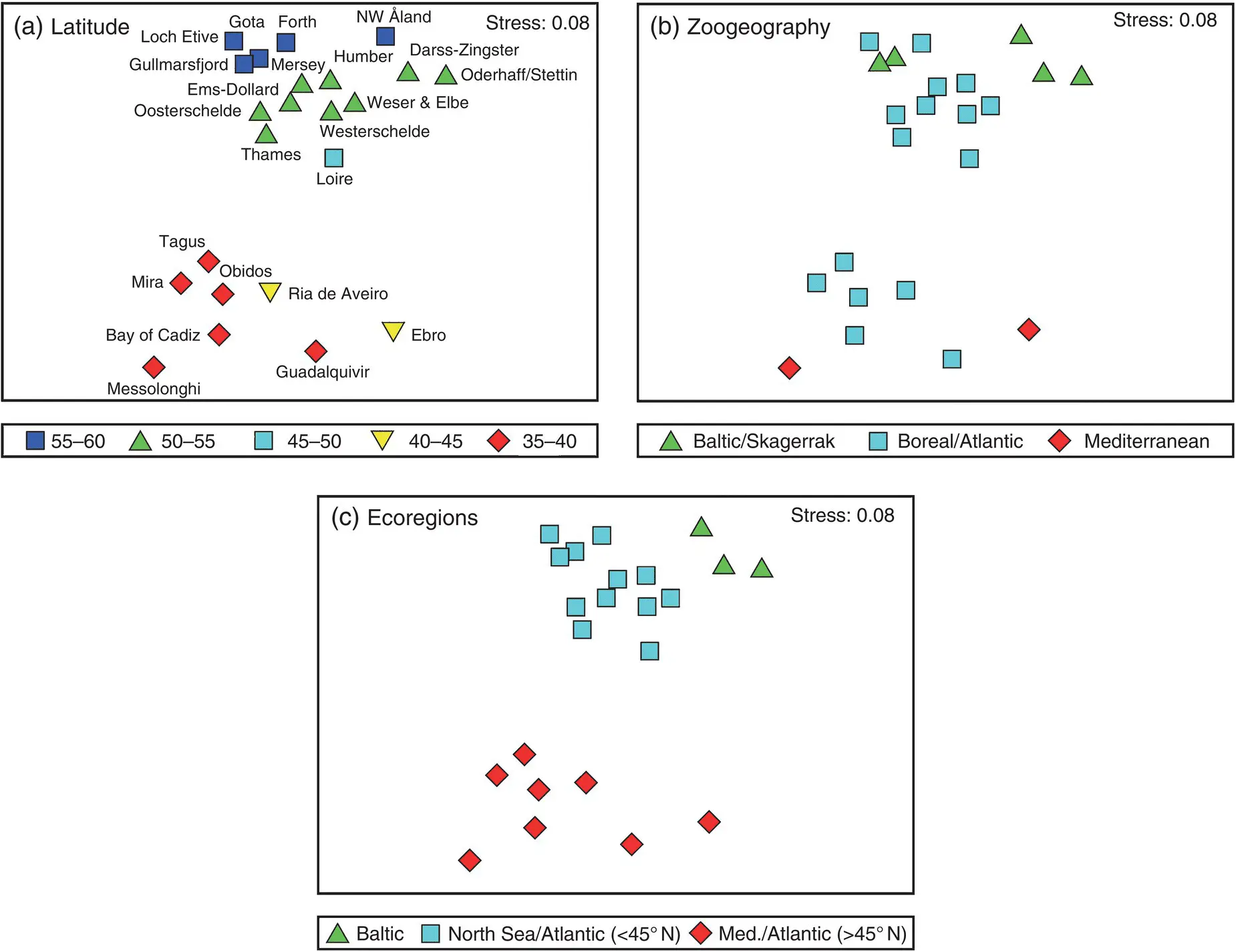
Figure 2.5 nMDS ordination of fish taxa reported in 23 European estuaries (after Coates et al. 2004). Systems are labelled according to (a) latitude, (b) zoogeographic regions identified by Pihl et al. (2002) and (c) the modified ecoregions described in the text.
Pihl et al. (2002) divided European coastal waters into three regions on the basis of a combination of biogeography and factors such as tidal range, salinity, and water temperature. The Boreal/Atlantic region includes the Atlantic and North Sea coasts from Denmark to Gibraltar, including the British Isles, where the estuaries are all influenced by predictable and pronounced semi‐diurnal tides. The Baltic/Skagerrak region includes the region east from the interface with the North Sea between Norway and Denmark and all of the Baltic Sea. The estuaries in this region are not influenced by significant tidal movement and both salinity and temperature may be significantly reduced. The Mediterranean region covers the area east from the Strait of Gibraltar and includes all of the Mediterranean Sea. Estuaries in this region are microtidal (tidal range <2 m), with salinities not markedly lower than the sea, and average water temperatures higher than those in the previously described regions. Based on the above geographic regions and associated estuarine physico‐chemical characteristics, the fish assemblages in the Mediterranean and Boreal/Atlantic systems were situated towards the bottom half of the ordination plot while a mixture of Boreal/Atlantic and Baltic/Skagerrak systems were located in the top half of the plot ( Figure 2.5b).
Читать дальше
